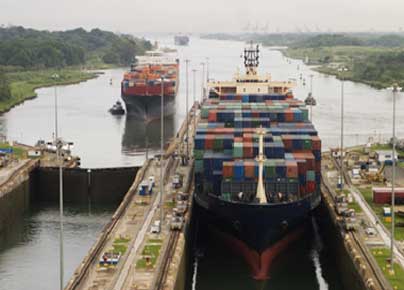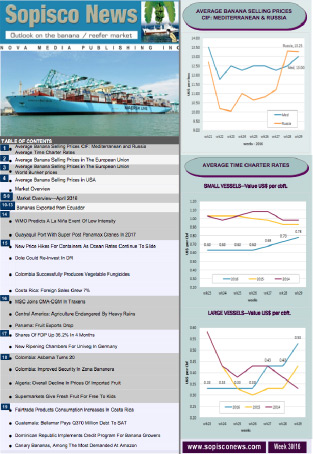Panama Canal Successfully Averts Shipping Crisis Through Effective Water Management
2024-06-21

The Panama Canal has successfully averted a shipping crisis that threatened to disrupt $270 billion worth of annual trade. This was achieved through meticulous water management and a touch of good fortune.
Last year, as drought conditions prevailed in the Central American nation, the Panama Canal Authority was compelled to reduce the daily number of vessels permitted to cross the canal to 22, approximately 60% of the usual traffic. This led to shippers paying hefty sums to bypass the growing queue and evade wait times beyond two weeks.
However, with the recent rise in water levels, the authorities have begun to increase the limit. As of Tuesday, they announced that 34 vessels will be allowed to transit daily starting late July, nearing the pre-drought limit of 38. Currently, shippers wait less than two days to transit the canal. If the current rain patterns persist, the canal could return to total capacity by next year, according to a written response from the canal authority.
The canal authority stated, "Current forecasts indicate that the constant rains will continue for the next few months. If this continues to be the case, the canal plans to gradually lift restrictions, allowing conditions to completely normalize in 2025."
The canal's recovery can be attributed partly to successful water-management measures. However, it is also the result of a wetter-than-expected dry season, which typically extends from December to April in Panama and the cessation of El Niño. This weather phenomenon resulted in one of Panama's driest years on record.
This dramatic shift highlights how global waterways are increasingly vulnerable to extreme weather. Countries and companies must adapt or find ways to mitigate the effects of climate change as it alters trade flows. Melting sea ice creates new shipping routes in the Arctic, while drought is causing chokepoints in other parts of the world. Additionally, security concerns amid the Israel-Hamas conflict have disrupted traffic in the Red Sea.
For the Panama Canal, proactive water-saving measures such as cross-filling, a technique that reuses water in the canal's locks, and reducing daily transits have helped mitigate the Impact of the drought, according to the canal authority. The current goal is for Lake Gatún and another reservoir connected to the canal to rise enough to maintain trade flows at capacity through the next dry season. This demonstrates the canal's commitment to effective water management and its ability to adapt to changing conditions, instilling confidence in managing global waterways.
Under normal circumstances, the Panama Canal handles about 3% of global maritime trade volumes and 46% of containers moving from Northeast Asia to the U.S. East Coast. Any increase in capacity is not just a relief to shippers but also a significant development in the context of climate change and global trade. Some shippers were forced to take longer routes around South Africa or through Chile's Strait of Magellan to deliver their goods to market, highlighting the global implications of the Panama Canal's recovery.









